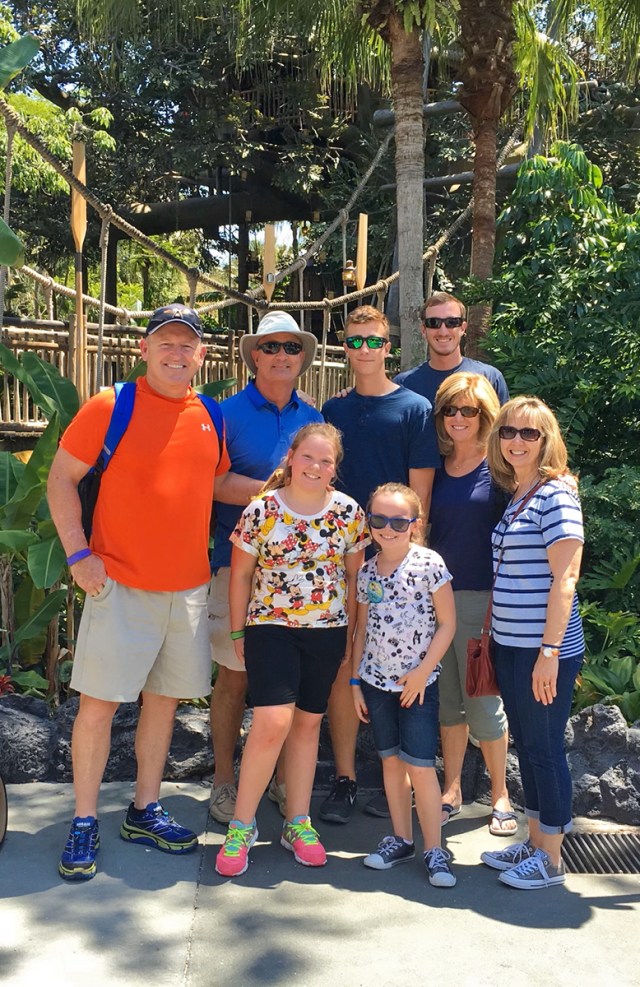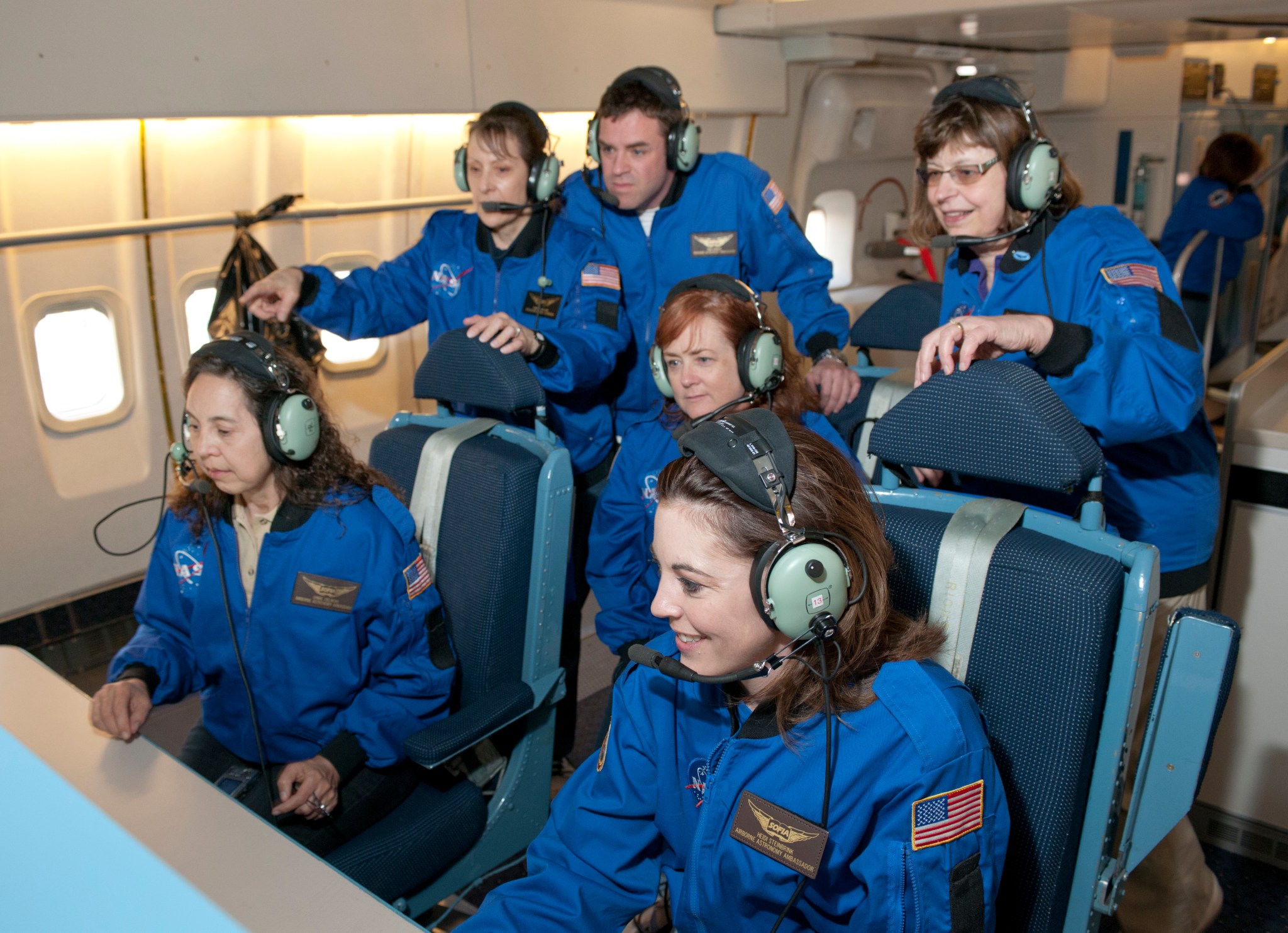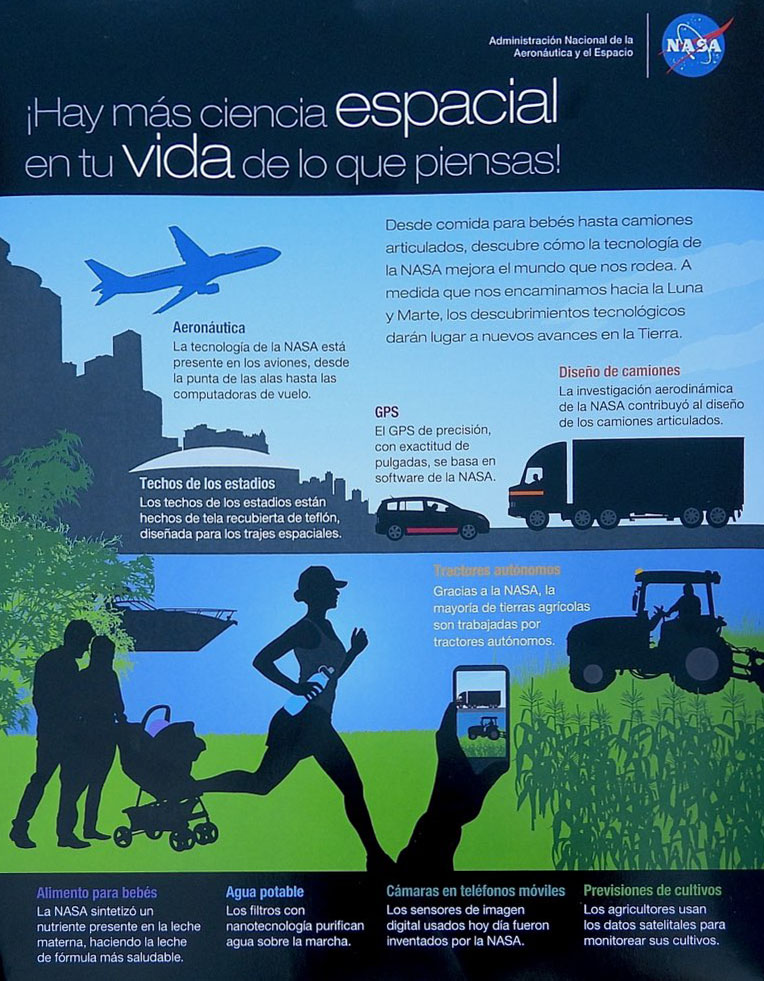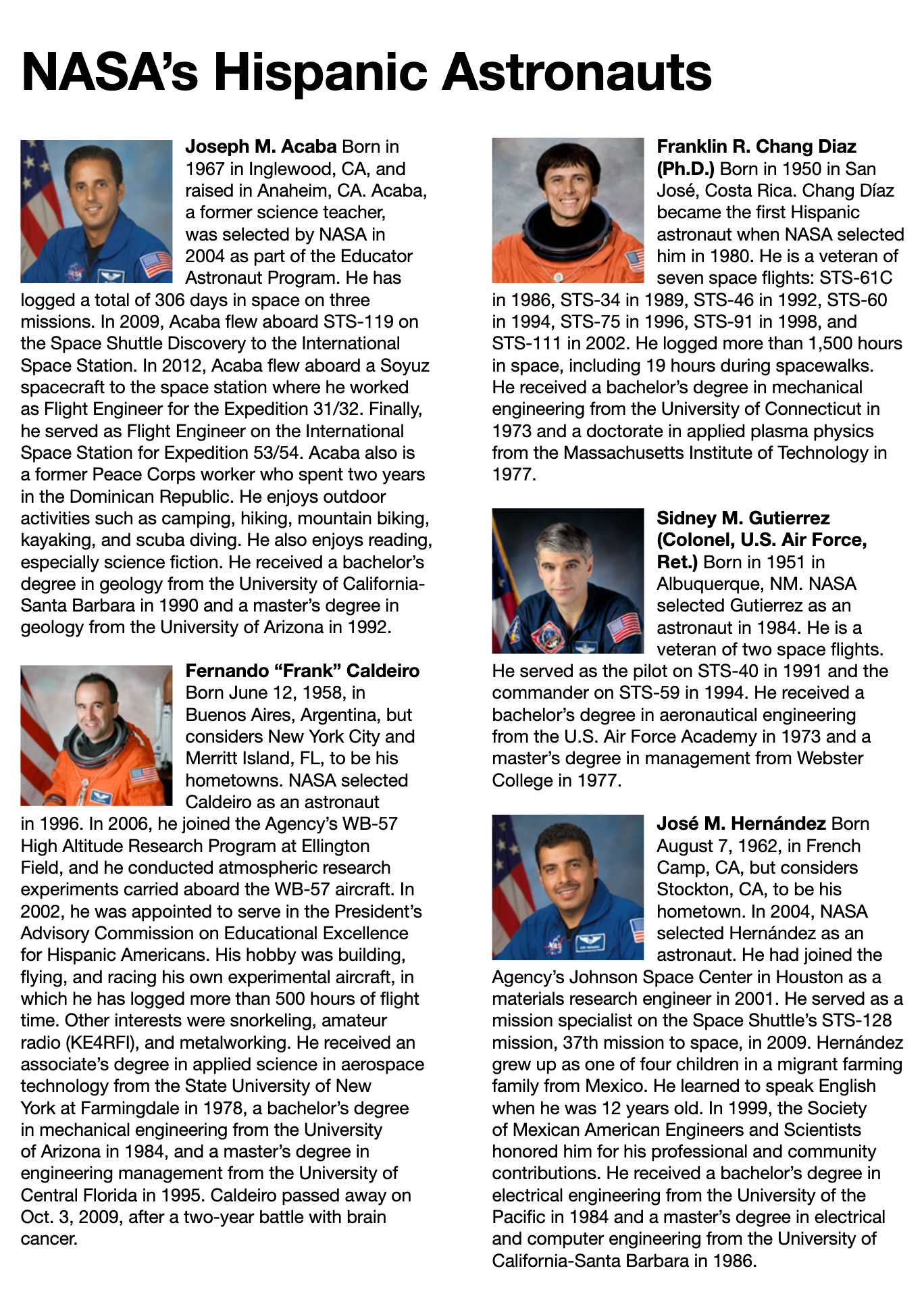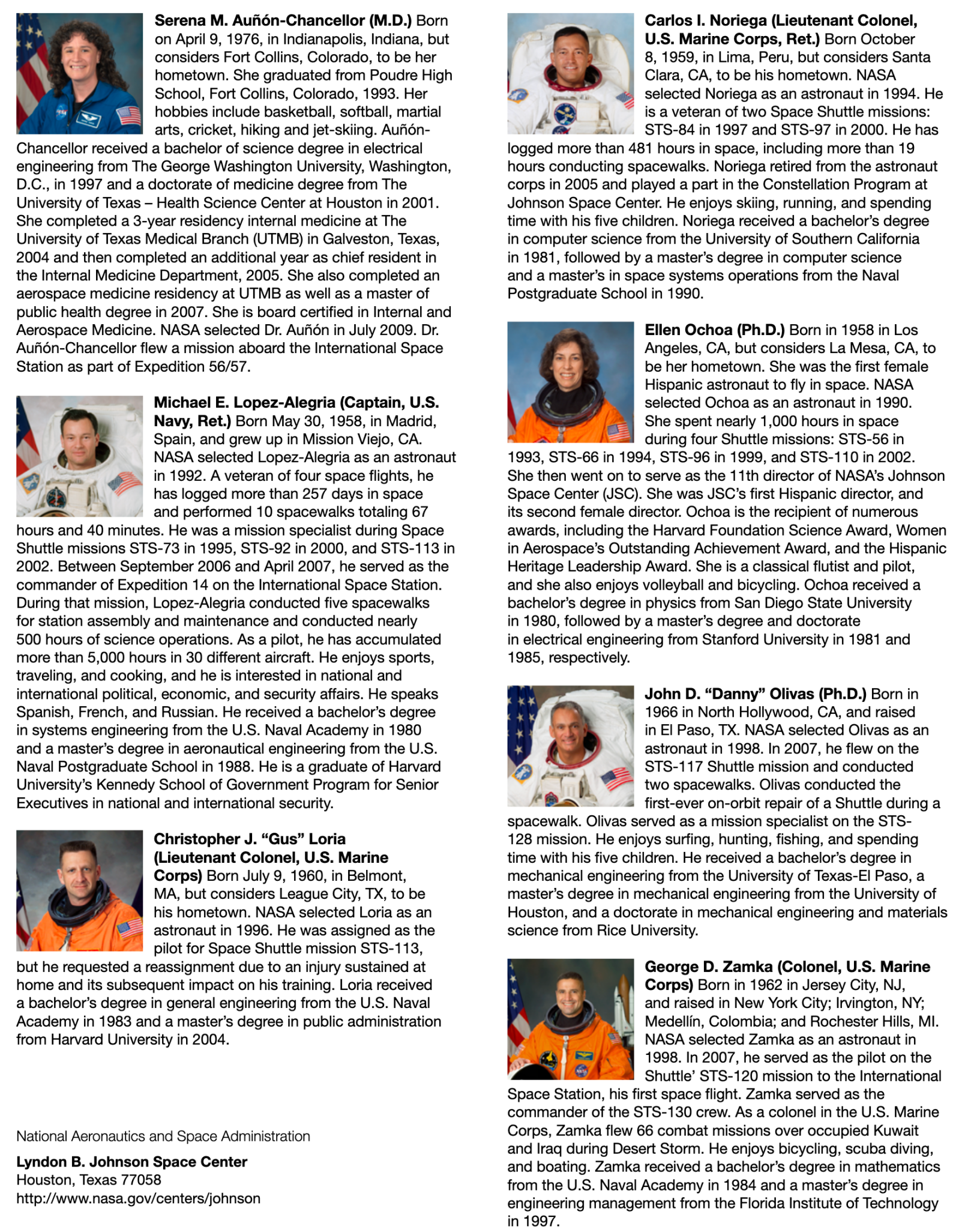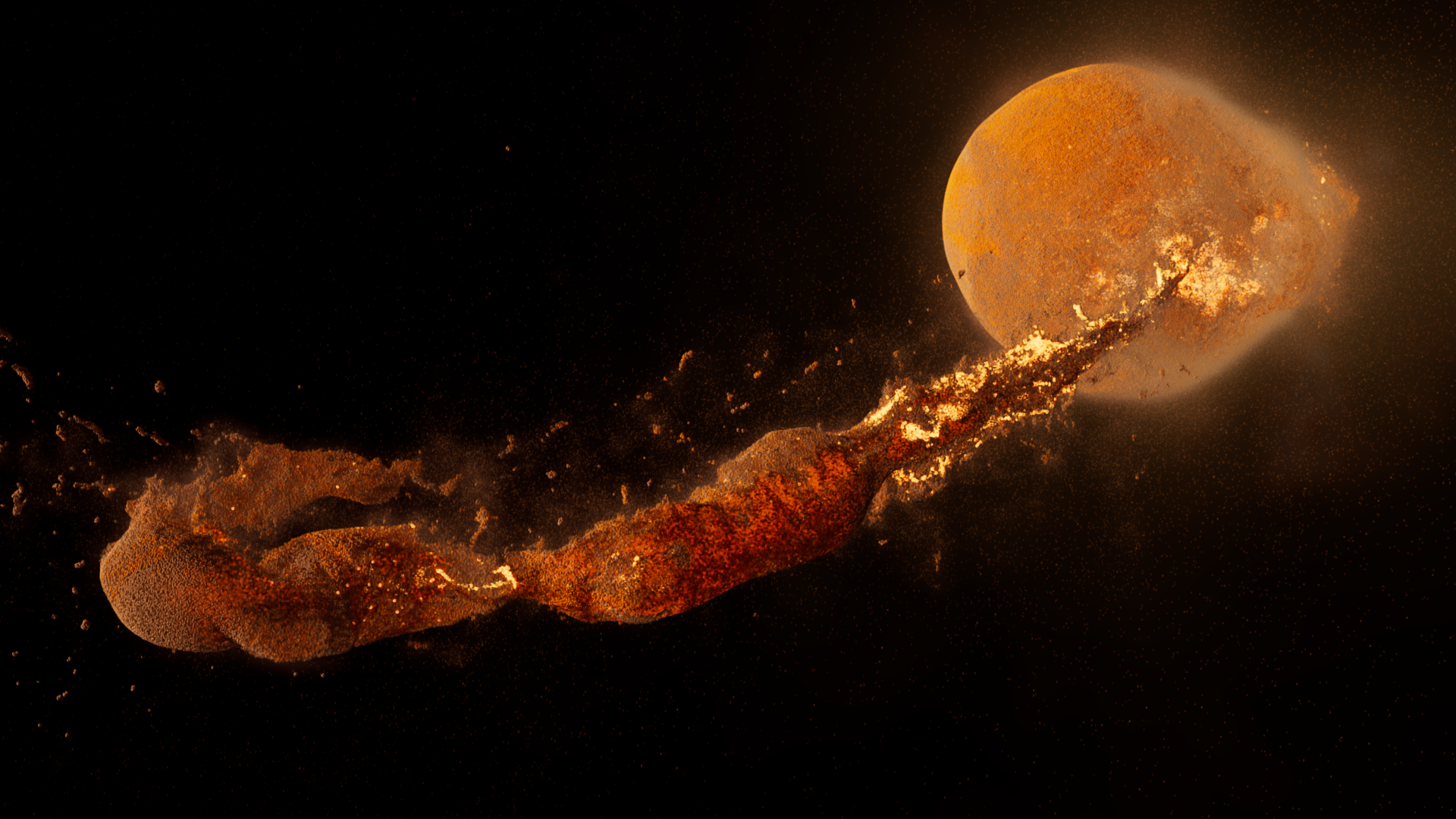Congresswoman Eshoo Tours SOFIA Flying Observatory Upon its Retirement
by Abigail Tabor
On Oct. 14, Rep. Anna G. Eshoo and Eugene Tu, center director at NASA’s Ames Research Center in California’s Silicon Valley, visited the now-retired Stratospheric Observatory for Infrared Astronomy (SOFIA) and met with a group of pilots who flew the aircraft.
The observatory – a highly modified airplane carrying a 100-inch telescope – was making its last stop at Ames, where the mission was managed. The aircraft was maintained and operated by NASA’s Armstrong Flight Research Center in Palmdale, California. SOFIA was a joint project of NASA and the German Space Agency at DLR.
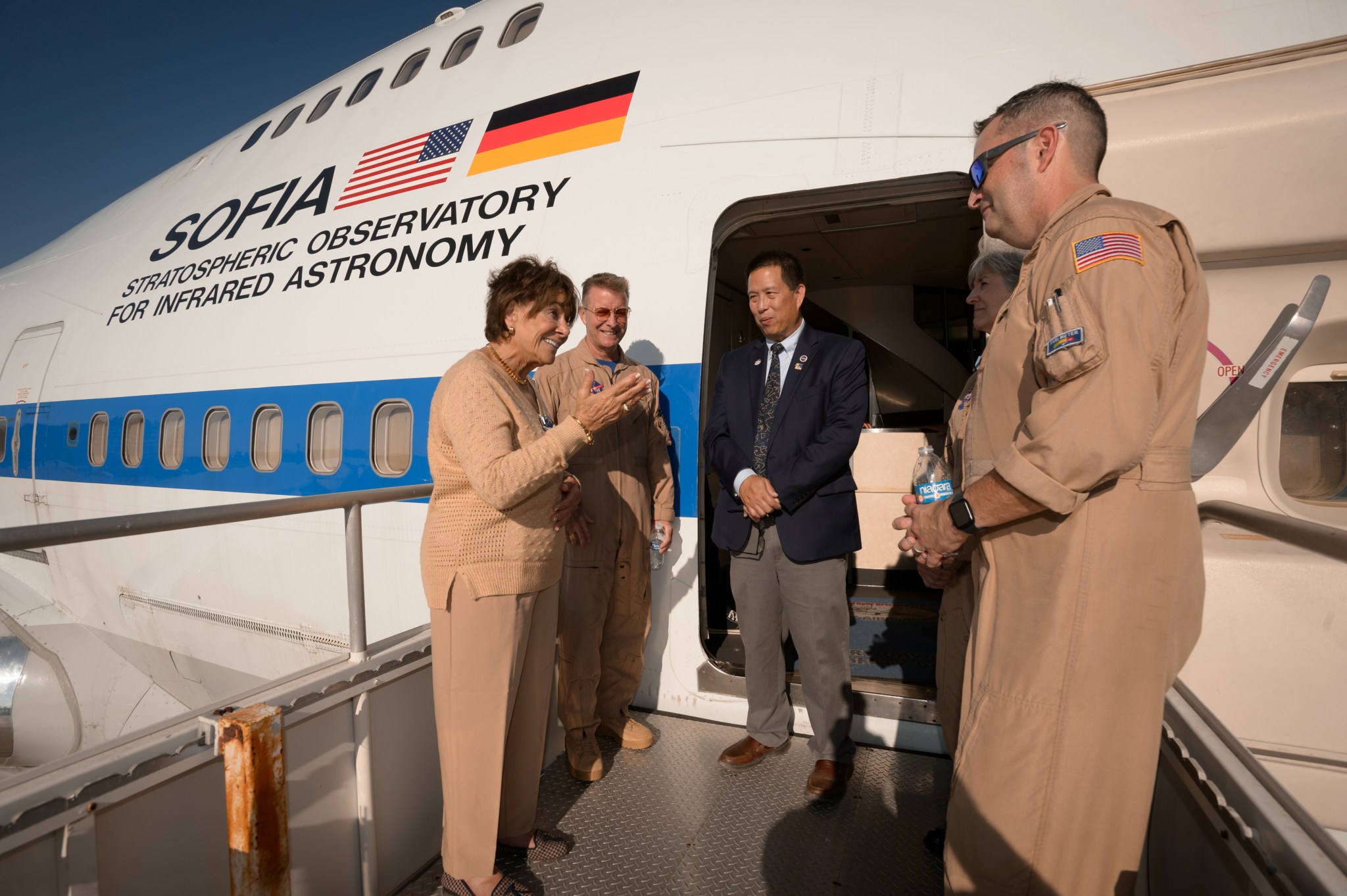
“While the conclusion of SOFIA’s mission is bittersweet, I salute the superb work of the brilliant scientists and engineers at NASA who managed the project,” said Eshoo. “Over the last eight years, they have worked on this airborne observatory that has allowed astronomers to study the solar system from a viewpoint not possible from the ground, including star birth and death, black holes, the formation of new solar systems, and complex molecules in space. I’m proud to have been an unswerving supporter of SOFIA and proud of the discoveries made.”
During the aircraft’s visit to Ames, members of the SOFIA team, other Ames employees, and their families were able to say farewell to a mission supported by a great number of professionals in diverse roles, from the start of its development in 1996 to the completion of its science program with the end of science flights in September 2022.
Engineering teams at Ames played a critical role in SOFIA’s development, ensuring it could make the sensitive astronomical observations needed to conduct its science. They led the design of a door in the side of the aircraft that opened in flight to expose the telescope to the sky, operating smoothly for eight years of flights studying the universe in infrared light.
Today, SOFIA’s scientific legacy encompasses a great variety of discoveries. Over the course of the mission, SOFIA’s observations of the Moon, planets, stars, star-forming regions, and nearby galaxies included the discovery of water on the sunlit surface of the Moon.
As the flying observatory makes way for the next generation of infrared astrophysics, starting with NASA’s James Webb Space Telescope, SOFIA’s data will remain publicly available via data archives for astronomers worldwide to study and reveal more about our universe.
SOFIA was a joint project of NASA and the German Space Agency at DLR. DLR provided the telescope, scheduled aircraft maintenance, and other support for the mission. NASA’s Ames Research Center in California’s Silicon Valley managed the SOFIA program, science, and mission operations in cooperation with the Universities Space Research Association, headquartered in Columbia, Maryland, and the German SOFIA Institute at the University of Stuttgart. The aircraft was maintained and operated by NASA’s Armstrong Flight Research Center Building 703, in Palmdale, California. SOFIA achieved full operational capability in 2014 and concluded its final science flight on Sept. 29, 2022.
Ames Employees Tour the Retired SOFIA Aircraft During its Final Visit to Ames
Ames employees were invited to the flight line to take a tour of the now-retired SOFIA aircraft during it’s last visit to Ames on Oct. 14. Congressman Mike Honda, and Congresswoman Anna Eshoo were invited guests to the tour. A potluck picnic was held for employees to discuss SOFIA’s missions and accomplishments. SOFIA was a joint project of NASA and the German Space Agency at DLR. It is a Boeing 747SP jetliner modified to carry a 106-inch diameter telescope and was designed to observe the infrared universe. DLR provided the telescope, scheduled aircraft maintenance, and other support for the mission. NASA Ames managed the SOFIA program, science, and mission operations in cooperation with the Universities Space Research Association, headquartered in Columbia, Maryland, and the German SOFIA Institute at the University of Stuttgart. The aircraft was maintained and operated by NASA’s Armstrong Flight Research Center Building 703, in Palmdale, California. SOFIA achieved full operational capability in 2014, and the mission concluded in September 2022.
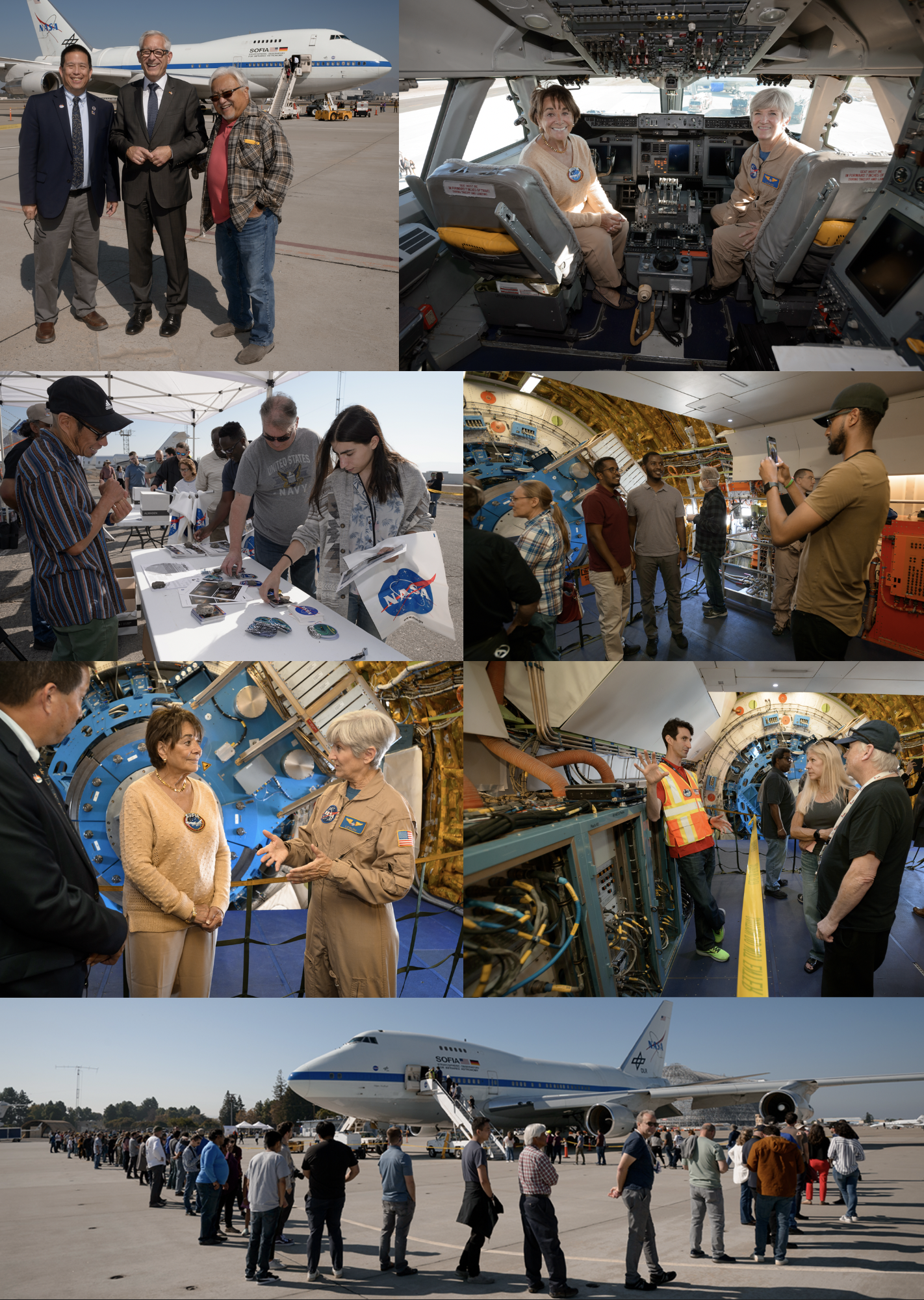
NASA’s Legacy of Science, Engineering in Retiring Airborne Observatory
by Abigail Tabor
The Stratospheric Observatory for Infrared Astronomy (SOFIA) was a mission of discovery, revealing unseen – and sometimes unseeable – parts of our universe. As the mission draws to a close, with flights ending on Thursday, Sept. 29, NASA is taking a look back at the scientific accomplishments of SOFIA and some of the feats of engineering that let it fly.
“From deepening our understanding of water on the Moon to revealing the invisible forces of cosmic-scale magnetic fields, none of it could have happened without the hundreds of people who contributed their expertise to the SOFIA mission,” said Naseem Rangwala, the mission’s project scientist at NASA’s Ames Research Center in California’s Silicon Valley.
From the start of its development in 1996, SOFIA required engineering ingenuity. A Boeing 747SP jetliner had to be modified to carry the 38,000-pound, 100-inch (more than 17,000-kilogram, 2.5-meter) telescope provided by NASA’s partner on the SOFIA mission, the German Space Agency at DLR.
Engineers at Ames developed a garage door-like mechanism that rolled up to let the telescope observe the skies. In that configuration, it was “one of the largest open ports ever flown on an aircraft,” said Paul Fusco, a NASA engineer, now retired, who helped design the door system, “and the largest certified to fly at all altitudes and speeds with the door open. It was a really thrilling aviation innovation.”
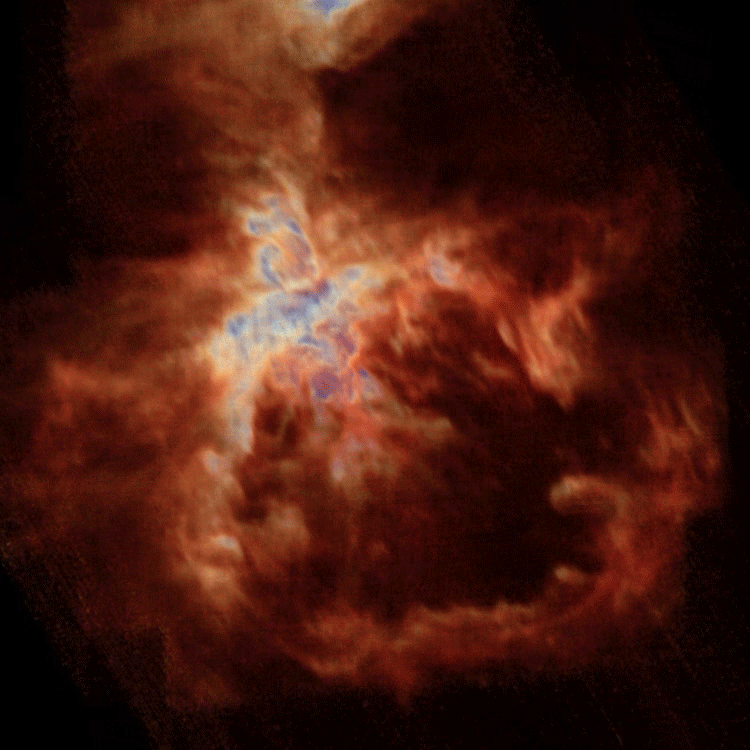
The mission’s pilots couldn’t even feel when the door was open. And the stability of the telescope itself was equivalent to keeping a laser pointer steady on a penny from 10 miles away. SOFIA had achieved a smooth flight and a steady gaze.
And that was only the beginning. By 2014, the observatory had reached its full operational capability, and for eight years SOFIA helped astronomers around the world use infrared light to study an impressive array of cosmic events and objects invisible to other telescopes.
“SOFIA’s unique scientific achievements were the result of the ingenuity of the incredible international community that grew up around the mission,” said Alessandra Roy, SOFIA project scientist for the German Space Agency, “which was only made possible by the collaboration of NASA and DLR.”
A community of high school teachers also came to know SOFIA personally, through the NASA Airborne Astronomy Ambassadors program. This professional development opportunity included an immersion experience flying aboard SOFIA with scientists and crew members. Participating teachers were able to bring this real-world science content back to their classrooms and reveal diverse STEM-related careers to students.
Now, the observatory is being retired. Science flights have ended, and the team is exploring options for a fitting permanent home for this special aircraft. SOFIA’s data from a total of 732 nights observing over the course of the mission will also be publicly available for scientists to study and conduct further research in the future.
“Infrared astronomy will go on at NASA, most notably with the James Webb Space Telescope,” said Paul Hertz, senior advisor for NASA’s Science Mission Directorate, former Astrophysics Division director, and former SOFIA program scientist. “But SOFIA’s many and diverse contributions to science have already left their mark.”
Here are some ways in which SOFIA changed our understanding of the universe. Scroll down to read on, or follow a topic with the links below:
- Discovery of Water on Sunlit Portion of Moon
- Finally Detected: First Type of Molecule Ever to Form in Universe
- Ultra-Time-Sensitive Observations
- Revealing the Magnetic Universe
- New Way to Study Earth’s Atmosphere, Climate
- A Star Is Born – or Not

Discovery of Water on Sunlit Portion of Moon
Although SOFIA’s telescope wasn’t originally configured to look at the Moon, its lunar observations confirmed, for the first time, water on the sunlit surface of the Moon. This meant water may be distributed across the lunar surface, and not limited to cold, shadowed places.
NASA is eager to learn about water on the Moon in advance of sending humans to the lunar surface with the Artemis missions. SOFIA’s data also adds to the work of future Moon missions, such as NASA’s water-hunting Volatiles Investigating Polar Exploration Rover.
The Moon was not SOFIA’s only target in our solar system. The observatory also studied the circulation of gases within Jupiter’s atmosphere, the possibility that comets delivered carbon to planets like Earth, and, just recently, the asteroid that will be explored by NASA’s Psyche mission – to name a few.
Finally Detected: First Type of Molecule Ever to Form in Universe
After decades of searching by astronomers, SOFIA detected, for the first time in space, the first type of molecule that ever formed in the universe.
SOFIA’s work in astrochemistry also shed light on one way water gets distributed in the universe. The mission explored the life cycle of materials in space, too: clouds of simple gases that form more complex gases and, ultimately, stars and star systems.
Ultra-Time-Sensitive Observations
SOFIA’s mobility allowed it to capture extremely fleeting events in astronomy over remote locations.
In 2015, Pluto passed directly between a distant star and the Earth, giving scientists a rare chance to analyze its atmosphere while backlit by the star. And the only observatory that could position itself over the open ocean, directly in the center of Pluto’s shadow racing across Earth’s surface, was SOFIA.
SOFIA was nimble, which also helped it provide long-term monitoring – as for a surprisingly long, bright outburst by a protostar in the Cat’s Paw Nebula – and respond quickly, when needed. This was the case in 2014 when an exploding star, a supernova, was spotted – the brightest and closest to Earth in decades.
Revealing the Magnetic Universe
SOFIA’s most paradigm-shifting contributions may have been in letting astronomers “see” and map magnetic fields on smaller scales than ever before.
One study revealed magnetic fields, once thought to slow star birth by preventing gravity from pulling raw material into a growing star, may sometimes work with gravity to nourish the birth of stars.
SOFIA studied the roles magnetic fields play in the cosmos across a range of scales – from star formation on the “small” end to phenomena shaping entire galaxies, feeding blackholes, and causing whole galaxies to merge.
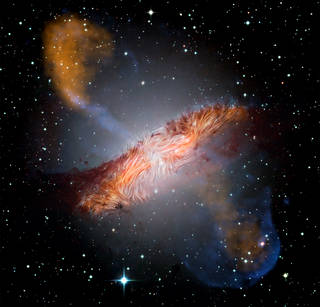
New Way to Study Earth’s Atmosphere, Climate
Flying at 38,000 to 45,000 feet, SOFIA soared above 99.9% of the water vapor in Earth’s atmosphere that obscures infrared observations from the ground. But the telescope still peered through the upper reaches of our atmosphere.
After developing ways to work with SOFIA data on this hard-to-study region, researchers were able to make direct measurements of atomic oxygen in Earth’s upper atmosphere.
Studying other atmospheres was already in SOFIA’s wheelhouse. Observing the occultation of a star by Neptune’s moon Triton revealed secrets of its atmosphere, while a challenging set of observations of Venus could help shed light on reports of phosphine, a potential biomarker for microbial life, in that planet’s atmosphere.
A Star Is Born – or Not
By observing in infrared light, SOFIA revealed secrets of star formation that would otherwise have remained hidden inside massive clouds of gas and dust.
One major area of research for SOFIA involved an effect called “feedback,” where stars either help or hinder the creation of more stars in their neighborhood. Using SOFIA’s data, researchers found that a stellar wind in the Orion Nebula is clearing a bubble free of material needed to form new stars, while, in another nebula, the original star is triggering the birth of new generations.
Astronomers learned all these things and many more as SOFIA explored the universe from 40,000 feet. Even as the mission winds down, making way for the next chapter in infrared astronomy, the discoveries made from the observatory’s data will go on. SOFIA’s legacy and that of the entire team who made the mission fly is to have taught humanity more about the cosmos and inspired others to do the same.
SOFIA was a joint project of NASA and the German Space Agency at DLR. DLR provided the telescope, scheduled aircraft maintenance, and other support for the mission. NASA’s Ames Research Center in California’s Silicon Valley managed the SOFIA program, science, and mission operations in cooperation with the Universities Space Research Association, headquartered in Columbia, Maryland, and the German SOFIA Institute at the University of Stuttgart. The aircraft was maintained and operated by NASA’s Armstrong Flight Research Center Building 703, in Palmdale, California. SOFIA achieved full operational capability in 2014 and concluded its final science flight on Sept. 29, 2022.
Unidos Comemos y Bailamos (United We Eat and Dance)
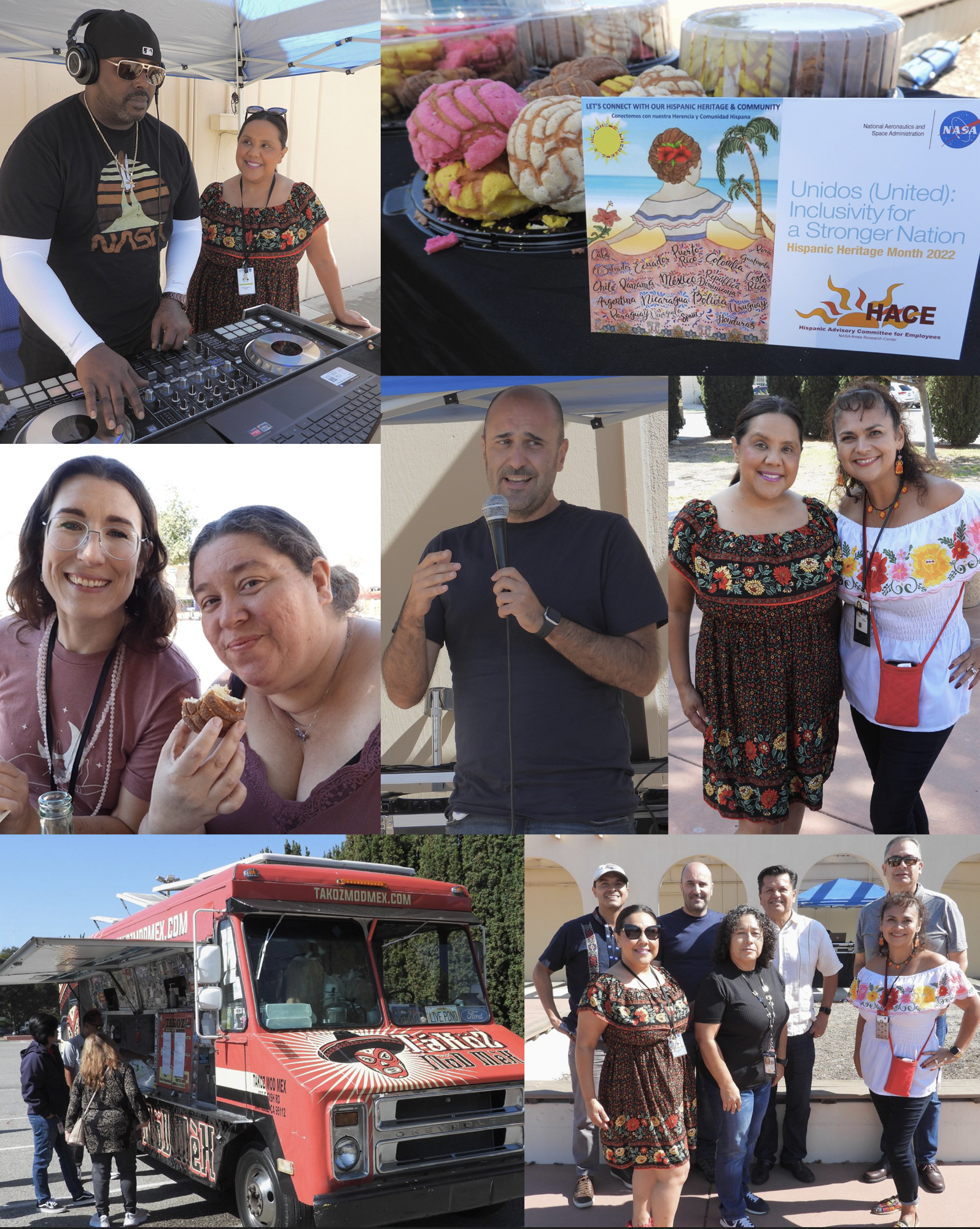
Employees Enjoy the Attractions and Picnic at Celebrate Ames Day
On Thursday, Sept. 29, Ames hosted multiple in-person events for Celebrate Ames Day on the parade grounds at the NASA Research Park with just under 1,500 in attendance. The Ames Exchange hosted a separate picnic lunch for employees co-located on the parade grounds. The day’s events began with DEIA Day, which included a special ceremony rededicating the Space Shuttle Wind Tunnel Test Model to Lewis Braxton, Ames’ former deputy center director. The full-scale VIPER rover model and unmanned aerial vehicles (UAVs) used for science and aeronautics research were on display. Booths of interest included the center’s nine Employee Resource Groups, Chabot Space & Science Center, and environmental information. The Innovation Fair was held along with the United States Geological Survey and NASA Science & Technology Colloquium Program.

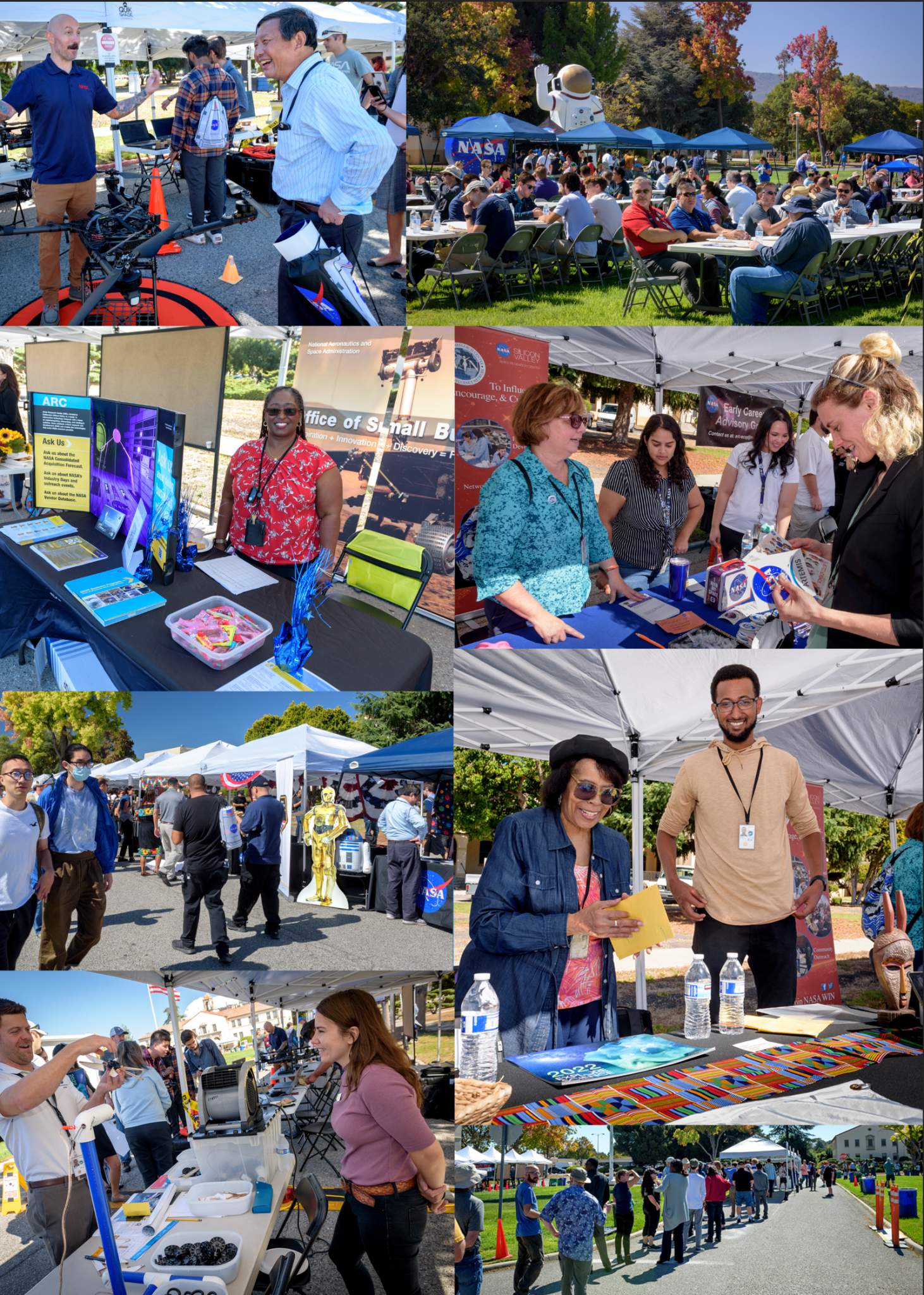
Congratulations to This Year’s 2022 Ames Honor Award Recipients
The honorees below will be recognized at our annual Ames Honor Awards ceremony which will be held virtually. All employees are invited to watch the ceremony as we recognize and honor the achievements of our colleagues. Thank you to everyone who submitted a nomination for this prestigious award, and congratulations to the deserving recipients.
2022 AMES HONOR AWARDS RECIPIENTS
Administrative Assistant Support/Secretary
Veronica L. Laird
Administrative Professional
Carolina Rudisel
Best First Paper
Divya Bhadoria
Contractor Employee
Andres Dono Perez, Millennium Engineering and Integration Co.
Daniel Gitan, Lockwood Hills Federal, LLC
Demetrios P. Katsaduros, SimLabs III Contract Management & Technical Services
David R. Keil, Jacobs
Jennifer M. Kenworthy, Bay Area Environmental Research Institute
Witold J. F. Koning, Science and Technology Corporation
Paul G. Levinson Muth, Millennium Engineering and Integration Co.
Jie Li, Metis Technology Solutions
Jeffrey S. Marshall, Universities Space Research Association
Kristina Pistone, Bay Area Environmental Research Institute
Debora K. Pletcher, Wyle Labs
Ryan T. Scott, Wyle Labs
Diversity and Equal Opportunity
Stewart R. Fearon
Education and Outreach
Michael J. Schuh
Engineer
Meghan D. Chandarana
Dongmeng Li
Kenneth R. Lyons
Group/Team
Advanced Composite Solar Sail System (ACS3) Project Team
Ames Child Care Center Vanguard Preschool Classroom
Ames Fitness Center Staff
Chabot College Display Cabinet Design and Manufacturing Team
Return to Work Readiness Heating, Ventilating, and Air Conditioning Group
Technology Transfer Office
VIPER Full-Scale Model Design and Manufacturing Team
X-59 Emergency Oxygen System Modification Team
Mentor
Marcus S. Murbach
Ethan A. Romander
Partnerships
Brenden C. Sanborn
Project Management
Annette M. Randall
Olga G. Stotzky
Scientist or Researcher
Leland S. Stone
Special Appreciation (Non-Ames Employees)
Jon B. Holbrook, NASA Langley Research Center
Thomas B. Steva, NASA Marshall Space Flight Center
Student
Somrita Banerjee, KBR Wyle Services, LLC
Supervisor/Manager
Erin E. Flynn-Evans
Kimberly K. Hines
Roger A. Miller
Sustainability
Alexander S. Murphy
Technical Support/Professional
Astrid Albaugh
William J. Deibler
Brian B. Lawry
Collision May Have Formed the Moon in Mere Hours, Simulations Reveal
by Frank Tavares
Billions of years ago, a version of our Earth that looks very different than the one we live on today was hit by an object about the size of Mars, called Theia – and out of that collision the Moon was formed. How exactly that formation occurred is a scientific puzzle researchers have studied for decades, without a conclusive answer.
Most theories claim the Moon formed out of the debris of this collision, coalescing in orbit over months or years. A new simulation puts forth a different theory – the Moon may have formed immediately, in a matter of hours, when material from the Earth and Theia was launched directly into orbit after the impact.
“This opens up a whole new range of possible starting places for the Moon’s evolution,” said Jacob Kegerreis, a postdoctoral researcher at NASA’s Ames Research Center in California’s Silicon Valley, and lead author of the paper on these results published in The Astrophysical Journal Letters. “We went into this project not knowing exactly what the outcomes of these high-resolution simulations would be. So, on top of the big eye-opener that standard resolutions can give you misleading answers, it was extra exciting that the new results could include a tantalisingly Moon-like satellite in orbit.”
The simulations used in this research are some of the most detailed of their kind, operating at the highest resolution of any simulation run to study the Moon’s origins or other giant impacts. This extra computational power showed that lower-resolution simulations can miss out on important aspects of these kinds of collisions, allowing researchers to see new behaviors emerge in a way previous studies just couldn’t see.
A Puzzle of Planetary History
Understanding the Moon’s origins requires using what we know about the Moon – our knowledge of its mass, orbit, and the precise analysis of lunar rock samples – and coming up with scenarios that could lead to what we see today.
Previously prevailing theories could explain some aspects of the Moon’s properties quite well, such as its mass and orbit, but with some major caveats. One outstanding mystery has been why the composition of the Moon is so similar to Earth’s. Scientists can study the composition of a material based on its isotopic signature, a chemical clue to how and where an object was created. The lunar samples scientists have been able to study in labs show very similar isotopic signatures to rocks from Earth, unlike rocks from Mars or elsewhere in the solar system. This makes it likely that much of the material that makes up the Moon originally came from Earth.
In previous scenarios where Theia sprayed out into orbit and mixed with only a little material from Earth, it’s less likely we’d see such strong similarities – unless Theia was also isotopically similar to Earth, an unlikely coincidence. In this theory, more Earth material is used to create the Moon, particularly its outer layers, which could help to explain this similarity in composition.
There have been other theories proposed to explain these similarities in composition, such as the synestia model – where the Moon is formed inside a swirl of vaporized rock from the collision – but these arguably struggle to explain the Moon’s current orbit.
This faster, single-stage formation theory offers a cleaner and more elegant explanation for both these outstanding issues. It could also give new ways to find answers for other unsolved mysteries. This scenario can put the Moon into a wide orbit with an interior that isn’t fully molten, potentially explaining properties like the Moon’s tilted orbit and thin crust – making it one of the most enticing explanations for the Moon’s origins yet.
Getting closer to confirming which of these theories is correct will require analysis of future lunar samples brought back to Earth for study from NASA’s future Artemis missions. As scientists gain access to samples from other parts of the Moon and from deeper beneath the Moon’s surface, they will be able to compare how real-world data matches up to these simulated scenarios, and what they indicate about how the Moon has evolved over its billions of years of history.
A Shared Origin
Beyond simply learning more about the Moon, these studies can bring us closer to understanding how our own Earth became the life-harboring world it is today.
“The more we learn about how the Moon came to be, the more we discover about the evolution of our own Earth,” said Vincent Eke, a researcher at Durham University and a co-author on the paper. “Their histories are intertwined – and could be echoed in the stories of other planets changed by similar or very different collisions.”
The cosmos is filled with collisions – impacts are an essential part of how planetary bodies form and evolve. On Earth, we know that the impact with Theia and other changes throughout its history are part of how it was able to gather the materials necessary for life. The better scientists can simulate and analyze what’s at play in these collisions, the more prepared we are to understand how a planet could evolve to be habitable like our own Earth.
This research is a collaborative effort between Ames and Durham University, supported by the Institute for Computational Cosmology’s Planetary Giant Impact Research group. The simulations used were run using the open-source SWIFT, (SPH with Inter-Dependent Fine-grained Tasking) code, carried out on the DiRAC (Distributed Research Utilizing Advanced Computing) Memory Intensive service (“COSMA”), hosted by Durham University on behalf of the DiRAC High-Performance Computing facility.
Inflatable Entry Technology for NASA’s Future Missions to Other Worlds and Ames’ Contributions to LOFTID
by Frank Tavares
Sending humans and their cargo to Mars will be an expedition unlike any NASA has attempted before. As NASA sets its sights on the Red Planet and beyond, the agency is developing technologies to ensure a safe landing for large payloads on worlds with an atmosphere. NASA’s Low-Earth Orbit Flight Test of an Inflatable Decelerator (LOFTID) mission tests a new inflatable heat shield that could enable large-scale missions to Mars, Venus, and Titan, as well as re-entering Earth’s atmosphere.
Heat shields protect spacecraft through the fiery passage of atmospheric entry, where temperatures can reach up to levels half as hot as the surface of the Sun. LOFTID’s unique approach uses an inflatable heat shield that deploys in space to slow down and shelter a spacecraft during atmospheric entry. The compact design takes up less space in the rocket than traditional rigid heat shields, allowing additional space for future large cargo needs for travel to Moon and to Mars. The scalable design has potential applications for human Mars missions, low-Earth orbit return including rocket asset recovery, and the ability to bring an unprecedented amount of mass back from the International Space Station.
Through a partnership with United Launch Alliance, LOFTID will rideshare on an Atlas V rocket with NOAA’s Joint Polar Satellite System 2 (JPSS-2). The launch is scheduled for November 2022 from Vandenberg Space Force Base in California. At launch, the packed LOFTID heat shield is only 4 feet in diameter. After deploying in space to a diameter of 20 feet, it will re-enter Earth’s atmosphere and splash down in the Pacific Ocean off the coast of Hawaii.
NASA’s Langley Research Center manages LOFTID, working with experts from various NASA centers across the country. NASA’s Ames Research Center in California’s Silicon Valley has longstanding expertise in heat shield technologies and has made several key contributions to LOFTID in the areas of instrumentation, fabrication, testing of the aeroshell, and the recovery light system.
Instrumentation
The primary goal of a flight test is to collect data on how a technology performs to help improve future versions of the technology. Instruments designed to collect that data must be able to withstand extreme environments and must be customized to fit the unique body of a deployable entry vehicle. As the lead center for LOFTID instrumentation, Ames equipped the vehicle with sensors that detect pressure, pins that measure forces, sensors that measure heat energy transfer, a radiometer, an “up-look” camera to watch launch vehicle separation and parachute deployment, and roughly 100 thermocouples that measure temperature.
This suite of instruments will give researchers a wide range of data to analyze, showing how LOFTID performed during atmospheric entry and providing insight to improve future designs. But to get this critical data, the instrumentation team needed to ensure that its devices could handle the extreme environment.
After leading investigations into sensor performance, adjustments were made in multiple areas. The Ames Sensors and Thermal Protection System (TPS) Advanced Research (STAR) Laboratories tested the radiometers and total heat flux gauges – measuring radiation and energy transfer – and used the results to improve calibration techniques, leading to better and more reliable data. Ames also designed a new configuration for the thermocouples, ensuring the sensors will withstand LOFTID’s journey.
Instrumentation contributions were also made by other NASA centers. Langley contributed the vehicle’s GPS systems and inflation system sensors. Marshall Space Flight Center provided infrared and visible camera pods as well as an inertial measurement unit, which measures accelerations and angular rates of the vehicle. Armstrong Flight Research Center provided experimental fiber optic temperature sensors.
Aeroshell Fabrication and Testing
The LOFTID aeroshell, about 20 feet in diameter once deployed, will be the largest blunt body vehicle to ever have flown and returned through Earth’s atmosphere. After this successful demonstration, the next step is to scale up to a larger vehicle that will bring NASA closer to the technology needed to eventually land humans on Mars.
Ames has a major role in TPS development for NASA missions, but this project is unique even for Ames. LOFTID uses what is known as a “flexible TPS” that has been in development at Langley for over 15 years, and Ames has supported the project for over a decade.
Building any new technology is an iterative process, and testing is a key part of iteration. Ames provided developmental testing that helped inform the design of LOFTID’s unique inflatable structure. Once the flight vehicle was created, Ames helped verify it was safe to launch and provide the data analysis needed to prove it can withstand atmospheric entry. In addition, Ames provided oversight during the manufacturing and integration process of the inflatable structure.
An earlier version of LOFTID’s technology was also tested in one of the biggest wind tunnels in the world, the 40-foot by 80-foot National Full-Scale Aerodynamics Complex (NFAC) at Ames.
Recovery Light System
LOFTID’s inflatable heat shield will splash into the Pacific Ocean under the cover of darkness, creating a unique recovery challenge for the mission. Ames provided a solution: the recovery light system, which will make it possible to visibly locate the vehicle and retrieve it at night.
The system will activate an array of lights on its parachute that flash as the vehicle descends before eventually splashing down into the Pacific Ocean. Ames led the development of the system, from its initial design and fabrication all the way through its testing and delivery.
Ames has had crucial roles in LOFTID’s success, including designs that are key to its ability to reenter safely, obtain crucial data, and recover the vehicle after the demonstration is complete.
LOFTID is dedicated to the memory of Bernard Kutter, manager of advanced programs at ULA, who passed away in August 2020 and was an advocate for technologies like LOFTID that can lower the cost of space access.
The LOFTID project is managed and funded through NASA’s Technology Demonstration Missions program, part of the agency’s Space Technology Mission Directorate. The project is led by NASA’s Langley Research Center in Hampton, Virginia, in partnership with United Launch Alliance and with contributions from NASA’s Ames Research Center in Silicon Valley, Marshall Space Flight Center in Huntsville, Alabama, and Armstrong Flight Research Center in Edwards, California. NASA’s Launch Services Program, based at the agency’s Kennedy Space Center in Florida, is responsible for managing the launch service.





